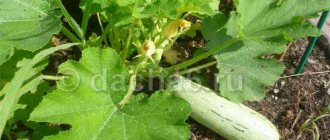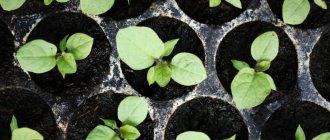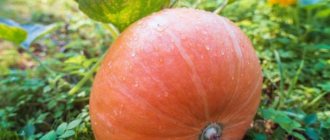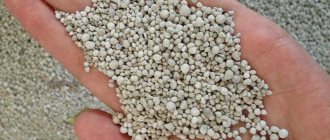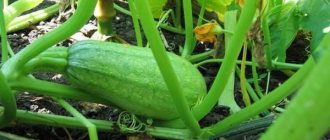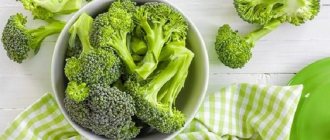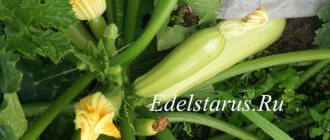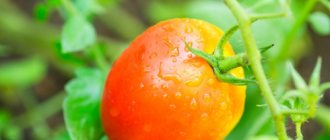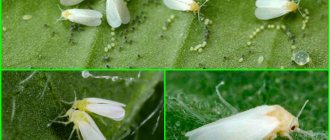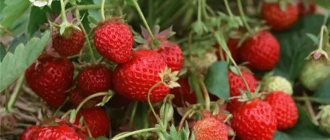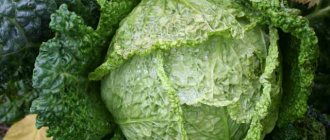Pumpkin is an annual herbaceous plant of the Cucurbitaceae family. Melon culture. It has a powerful root system, which consists of the main root, as well as adventitious, small root processes. Most of the roots are located at a depth of fifty centimeters; root shoots can penetrate the soil up to 5 meters. The total length of the entire root system is 25 meters. The stem of the plant reaches a length of 8 meters, it is creeping and branches well. The large leaves are covered with many small fibers. The flowers are brightly colored - yellow or orange, large and are an attractive object for insects. At the end of summer, a fruit is formed, the shape and color of which depends on the variety. The pulp is orange and reddish in color, juicy and dense, hidden under a thick peel.
Before purchasing pumpkin seeds, you need to pay attention to the following factors: the plant should not be afraid of temperature changes, drought and viruses, and also taste good - these are the best pumpkin varieties for open ground.
Beneficial features
Our ancestors began to use the fruits of this plant as food; it was presented to the table in Ancient Rome and Greece almost 5 thousand years ago. In the 20th century, detailed studies of the fruit showed that its pulp contains many substances useful for human health:
- Vitamins A and E;
- Vitamin C;
- Vitamins B and K;
- Zinc, calcium and potassium, magnesium, fluorine, as well as the rare vitamin T;
- Amino acids, pectins and fiber.
Description of culture
The vegetable plant belonging to the genus Cucurbita has 18 varieties. Of these, only 3 species have nutritional value, the rest can be considered as fodder and ornamental varieties.
The history of the appearance of this plant has very ancient roots. Central America is considered to be the birthplace where pumpkin plants were first cultivated. Moreover, several subspecies were discovered in Africa and Asia Minor.
Pumpkin was brought to Russia in the 19th century. Since that time, the crop began to be considered as a valuable food product. Pumpkin used for food is divided into three types by breeders:
- Hard bark. This species is represented on the vegetable market in dozens of varieties. Among them there are bush-like, climbing and ornamental crops. This category also includes zucchini and squash, the rind of which gains hardness throughout the entire ripening period.
- Large-fruited. Gained popularity all over the world. In Russia, varieties of this species can gain weight up to 60 kilograms, while their sugar content is 15%.
- Nutmeg. Refers to the most delicious varieties. In terms of external characteristics, it is similar to hard-barked and large-fruited plants. However, the nutmeg pulp is not comparable to them: their sugar content reaches 11%, the structure is dense, oily, and the aroma is delicate. This species is represented by many varieties, but for cooking, gardeners give the greatest preference to the pear-shaped variety. In Russia, cold-resistant varieties are grown in which the fruits ripen in 3-4 months.
The nutritional value of pumpkin is due to its rich composition. This culture contains a large amount of pectin. Orange varieties contain more carotene than carrots. The benefits of the vegetable are also explained by the presence of minerals such as phosphorus, potassium, calcium and iron.
The maximum sugar content of the sweetest fruits is 15%. However, you should know that the sugar content is affected by the growing conditions of the plant. The more sun and heat the fruits receive during ripening, the sweeter their pulp becomes.
Muscat species
Muscat species are distinguished by their pear-shaped shape. The fruits are brown with a slight yellowish tint. This species is one of the most delicious, but it will take a long time for the harvest to ripen. Muscat species in Russia are best grown from seedlings.
"Butternut"
Late ripening. The ripening period of the variety is 100 days. It has several other names: “Nut”, “Nutmeg”.
The fruits can grow from 0.5 to 1.5 kilograms and have an elongated shape. Characterized by a nutty smell and original taste. The shelf life is quite long, thanks to the thick skin.
"Vitamin"
Not intended for growing in areas with low temperatures. Late ripening. At least 130 days must pass before ripening. It has a thin skin and oily, juicy flesh of a bright orange color. A ripe fruit can weigh from 4.5 to 6.8 kilograms. This species is recommended to be grown from seedlings. Ripens in September or early October.
"Prikubanskaya"
Ripening period is 91-136 days. A mature fruit can weigh from 2.4 to 4.6 kilograms. It is stored for a very long time and retains its taste.
The pulp is soft and juicy, about 4 cm, creamy when cut, hidden under a thin brown-orange crust.
"New"
Ripens in 116 days, the mature fruit weighs 6-7 kilograms. This species tolerates dry climates quite well, has a thin skin and pleasant, aromatic pulp. The cylindrical fruit can be heat treated or eaten raw.
Watch the video! Butternut squash varieties
Late
Late ripening varieties have a long shelf life and good yield.
Gribovskaya winter
This crop ripens 4 months after transplanting the seedlings to the garden bed. Vegetables are flattened, gray in color, weight - 3-4 kg.
The pulp is firm, orange-colored, and contains a large amount of useful substances. The harvest stores well in a cool, dry place.
Premiere
The plant forms long stems, so it requires a lot of space on the site. Vegetables ripen 4 months after germination. Pumpkins are flattened. The peel is dark green, covered with pale yellow spots. The pulp is orange, medium thickness (4-5 cm).
On one bush, 2-3 fruits are formed, the weight of which reaches 5-6 kg. The shelf life of vegetables is about six months.
Large-fruited varieties
Large-fruited varieties are the sweetest and most unpretentious to temperature fluctuations; the species has positive reviews from summer residents. It differs from other species in its size and heavy weight (from 20 to 55 kg). The fruits are large with thick skin, which allows them to be easily transported and stored for a long time.
"Arabatskaya"
Late ripening variety. The ripening period of this variety ranges from 118 to 127 days.
A mature pumpkin can be stored for up to 3.5 months, since it has a dense peel and a wide layer of pulp. The weight of a mature fruit is approximately 9 kilograms. The fruits tolerate dry weather conditions and diseases well. High-yielding variety.
"Big Moon"
A plant with an early ripening period, the growing season lasts 90 days. The weight of the fruits of this variety can reach 70-80 kilograms if one ovary is left on the vine. If cultivation occurs under normal conditions, the weight of one fruit is from 20 to 30 kilograms. The color of the pulp is uniform and rich. The variety is resistant to diseases. During heat treatment, it retains its taste well.
"Parisian Autumn"
This variety ripens quite quickly, in 90 days. The weight of a mature pumpkin is about 20 kilograms. Young shoots cope well with drought.
The variety is resistant to sudden increases and decreases in temperature; ripe fruit can be stored for up to 6 months. The variety is immune to diseases.
"Stopudovaya"
It will take 125 to 140 days for the fruit to fully ripen. The weight of one pumpkin is approximately 20 kilograms, but can, under certain conditions, reach 200 kg.
Large fruits can be obtained with constant moderate air humidity, a large distance between plants of 100x150 cm and active soil fertilization.
The bright yellow flesh has a rich sweetish taste and pleasant aroma.
It is important to know! This variety is resistant to adverse weather conditions and diseases and pests.
Pests
Pumpkin pests include spider mites, sprout flies, and aphids. Sap-sucking parasites inhibit the growth of the aerial parts and reduce the quality of flowering and fruiting. If the infection is severe, the bushes die.
For prevention, plants with a strong smell should be planted between the rows - mint, garlic, onions or tansy. It is also necessary to avoid dense plantings, remove leaves in the lower part in time, and sprinkle ash between the rows.
To combat parasites, use “Decis”, “Aktellik”, “Aktaru” or “Karbofos”.
Hard-barked species
This group includes not only pumpkins, but also zucchini and squash. A distinctive feature of plants of this species is the rapid ripening of fruits. At the end of summer, even in the middle zone, pumpkins are fully ripe. Another advantage is taste. The pulp of the fruit is very sweet and juicy. The ripe fruit can be stored for quite a long time because it has a thick skin. The pulp of some varieties is well suited for juice, while others can only be grown for seeds.
"Spaghetti"
Pumpkins of this variety have an early ripening period of 65 to 80 days. A large number of fruit ovaries can form on one wattle fence. After ripening, the fruit weighs from 0.8 to 1.5 kilograms. The pulp is not very sweet and has a fibrous structure. Often used to prepare side dishes.
"Muscat de Provence"
This variety is distinguished by high yield; one pumpkin can weigh from 8 to 10 kilograms. It takes a long time to ripen, within 120 days.
The skin of the fruit is very dense, and the pulp is tasty and smells like honey. This species is resistant to various diseases and viruses.
"Gilea"
The fruit ripens in 100-110 days. The weight of one pumpkin is from 6 to 9 kilograms. The pulp is very sweet and juicy, and the skin is covered with a layer of dense waxy coating.
The fruits of the Gileya variety are stored for a very long time; the shelf life of a mature plant can reach 12 months.
Diseases
It is difficult to grow pumpkin in open ground and obtain high-quality fruits without preventive treatments. At all stages of development, bushes can be affected by various diseases.
- Bacteriosis. Signs are the appearance of numerous brown sores on the surface of the leaf blade and stems, which leads to further death of the bush.
- White rot. A fungal infection appears as white spots on foliage and shoots. The affected areas rot, and the spots turn brown over time.
- Root rot. Girdle brown inclusions form mainly on stems and roots. Infected bushes stop growing, the foliage turns yellow and falls off.
- Powdery mildew. A sign of the disease is the appearance of a whitish coating on all above-ground organs of the crop, which becomes moist over time. The affected areas begin to rot.
- Anthracnose. The leaves are covered with numerous black sores.
You can grow pumpkin in the same place at intervals of 3 years. You also need to plant high-quality seed, disinfected with a solution of potassium permanganate.
If the crop is damaged by diseases, it is necessary to remove the damaged areas and treat with a solution of copper sulfate or Bordeaux mixture of 1% concentration.
Decorative varieties
Ripe fruits of this type of pumpkin are not used for food, since the pulp is bitter and not suitable for eating. Pumpkins of these varieties are used for decorating and decorating premises and for creating crafts. It must first be well processed and dried.
"Orange"
The fruits of this variety weigh no more than three hundred grams and have a bright orange peel, the shape and color reminiscent of an orange.
"Chalmoid"
The fruits of this species differ in shape and color and are:
- pear-shaped;
- warty;
- tangerine;
- star-shaped.
Harvest and storage
Depending on the variety, fruits are collected at different times. In ripe vegetables, the stalk is woody, dry and hard. The pumpkin skin should be firm and rich in color. Bushes with ripened fruits turn yellow and dry out.
Remove pumpkins from the garden before the first frost, because... The slightest freezing of the crop will negatively affect the duration of storage.
In the Moscow region, vegetables can be harvested in early September to allow the fruits to ripen at home for about 2-3 weeks. They are removed in dry weather so that moisture does not accumulate on their surface, which can cause rotting.
Store vegetables in a dry and well-ventilated place. The optimal temperature is 1-3 °C, humidity is 55-60%.
Varieties for cultivation in Siberia and the Urals
Several decades ago, only varieties of fodder pumpkin were intended for Siberia and the Urals, which do not have a pleasant taste and smell, but were suitable for growing in such conditions. They are unpretentious to environmental conditions and are intended for animal feed. But science does not stand still, and today there are many varieties that can be successfully grown even in regions with low temperatures. At the same time, they are not at all inferior in taste to their southern counterparts.
Advice! Such species are highly resistant to frost, diseases, pests and early ripening.
"Smile"
The species is distinguished by its high yield and rapid ripening (within 90 days); the fruits are small in size and weigh no more than a kilogram. Resistant to temperature changes and can be stored for a long time until January. Pumpkins look beautiful in the garden bed under large openwork leaves.
From one plant you can collect from 15 to 20 fruits; the pumpkin ripens quickly and tolerates low temperatures well. Suitable for growing in the Urals and Siberia. The fruit pulp is rich orange in color and sweet in taste.
"Russian"
The weight of a mature fruit can be from 2 to 4 kilograms, ripening occurs quickly. To store ripe pumpkin fruits, it is best to prepare a cool and dry room. One plant can produce up to 25 kilograms of harvest. The pumpkin pulp is tasty and has a melon aroma.
To obtain an early harvest, it is necessary to grow seedlings from seeds in advance, and at the end of spring, transplant the shoots into open soil. In the region of Siberia and the Urals, it is better to plant sprouts in early summer, since low temperatures and possible frosts can damage the plants.
"Freckle"
This species pleases gardeners with a rich harvest even with sudden temperature changes. One ripe fruit can weigh up to 3 kilograms. The plant needs regular watering and is afraid of powdery mildew, which a fungicide will help to cope with. The variety brings a rich harvest in regions with a harsh climate: in Siberia and the Urals.
The plant consists of 4-6 vines, in the form of a bush. One pumpkin can weigh up to three kilograms. The pulp of the fruit is tasty and tender, with the smell of pear. The skin color is green with small light yellow spots.
Hardbark
In this group there are many early ripening varieties with small fruits, and there are bush forms. The flesh is starchy or juicy, sometimes with unusual fruity aromas. There is also a neutral-fresh taste, ideal for dishes such as manti with pumpkin or compote with spicy cloves. If the sweetness is small, then the calorie content is extremely low.
Spaghetti
The variety is early (grows in 2 months), climbing. The weight of barrel-shaped pumpkins is 800 g, they are straw-colored outside and inside. The pulp is dry, contains characteristic fibers, but is tender and smells of vanillin.
Almond
Growing season 4 months, weight 5 kg, flattened shape. The skin and flesh are orange. High content of starch and sugars.
Gymnosperm (Gymnosperm)
Cold-resistant, mid-season, oval, up to 6 kg. Ripe fruits have green-yellow, spotted or striped skin. The pulp is light yellow, starchy, freshish. Skinless seeds – olive in color; When pollinated by other varieties, they become covered with a hard skin.
Miranda
This is the Golosemyanka variety in packaging.
Acorn squash (Acorn)
An exotic variety with portioned fruits (1 kg) is good for stuffing. The oval shape resembles acorns; the surface is longitudinally ribbed. It is also called “black pumpkin” for its dark green color, although there are variations with orange skin. The taste is sweetish, starchy (“potato”).
The best varieties for growing in the middle zone and Moscow region
For the Moscow region and central Russia, you can use seeds of any type of pumpkin, but the highest yield can be obtained by growing the following varieties:
"Healing"
Productivity, early ripening of fruits, resistance to frost and pleasant taste - all these are the advantages of the “Healing” pumpkin variety, which is especially recommended for central Russia. It is better to plant in June, in a well-lit area of the garden.
The fruits of the “Healing” pumpkin can be stored for 6 months. The fruits of this variety differ from others in their unusual shape and pattern on the skin. You can make healthy juice or puree from the fruit pulp.
In order to get a rich harvest, this species is planted in the soil using seedlings. Seedlings should be sown in advance in April and if it is in a warm place, shoots will appear within 7 days, and in May they can be transplanted into open ground. Before planting the sprouts outside, they must be gradually hardened off.
It is best to plant the plant in areas well lit by the sun and at a sufficient distance from neighboring plants. The variety grows actively after fertilizing or loosening the soil.
"Gribovskaya"
The fruits of the Gribovskaya pumpkin are large, from 4 to 8 kilograms. They are stored for a long time and have excellent taste.
Ripe pumpkins can be stored for a very long time without losing their unique properties. The pulp retains its pleasant taste and aroma, and only becomes sweeter. Pumpkin is a nutritious and tasty addition to baby food. It is recommended to consume fruit pulp for people who care about their health and figure.
“Gribovskaya” differs from others in its yield and large fruits, which can reach a weight of up to 8 kilograms. Thick skin makes it easy to transport ripe fruits. The outer skin of the pumpkin is milky in color, and the flesh inside is bright orange.
"Dachnaya"
Fruit ripening occurs quite early; you need to wait 70 days before the first ripe pumpkin appears. The weight of one fruit is from 2 to 4 kilograms. The plant tolerates low temperatures and frosts well, and is resistant to temperature changes.
To obtain a rich harvest, you need to plant ready-made shoots in open ground. The soil should be warm, a comfortable temperature range from 12 to 15 degrees. After planting, the plant must be watered and loosened frequently.
Transfer rules
We transplant strong seedlings into warm soil
You can transplant the seedlings to the garden bed when they grow to 15-20 cm and form 4-5 leaves. Usually this procedure is carried out in the middle or end of May, when it becomes warm outside and the soil warms up to 10-12 °C.
The soil
It is necessary to plant pumpkins on the southern side of the site, where there are no strong winds and the sun always shines, which is necessary for this light-loving crop. For climbing varieties, a site near a fence or arch is suitable. The best “predecessors” of pumpkin are legumes, cabbage, root vegetables, onions and garlic.
This plant is demanding on soil fertility and loves light and loose soils.
You can improve the properties of clay or sandy soil by adding compost (1:1) to it. Peat or coarse river sand is also added. These components increase the moisture and breathability of the soil mixture. Consumption – 10 kg per 1 m².
2 weeks before the planned planting, the loams are sprinkled with nutrient compositions: ash (250 g), superphosphate (20 g), potassium and ammonium nitrate (10 g each).
To increase the nutritional value of sandy loam you will need:
- humus – 5 kg;
- superphosphate – 40 g;
- ash – 0.5 kg.
The quantity is calculated for an area of 1 m². After applying fertilizers, the area is dug up and leveled.
Planting scheme
Dig holes at a distance of 80-90 cm from each other, with a distance between rows of 1 m. The depth of the holes should correspond to the size of the root system of the seedlings. Each one is watered with water - 1 liter, then the roots are lowered into it, sprinkled with earth and hilled up. When planting seeds in open ground, make holes 4x4 cm. The optimal time for this is the end of May or the beginning of June.
Varieties that are recommended to be grown in the Northwestern regions
"Bush greenhouse"
The fruits of the bush pumpkin variety can weigh up to 4 kilograms. Pumpkin pulp has excellent taste - it is sweet and juicy. The fruits are often used to prepare various dishes; they retain their aroma both boiled and stewed.
The fruits of this species ripen very early. The fruit pulp is aromatic and juicy. And the crust is edible - crispy and dense.
"Acorn"
The fruits of this species resemble the shape of an acorn. The inside of the pumpkin is orange and tastes good.
The peel can be green or yellow, or a combination of both.
Precocious
Hardbark pumpkin lives up to its name—cutting and peeling these fruits can be difficult. By September it is usually fully ripe and ready to eat. It is not advisable to store it for a long time - after a month in the room, the seeds may germinate.
When they eat. The pumpkin is ready to eat if the stalk and bark have hardened, and the fruit itself has turned yellow or brown.
The pumpkin is hard-barked if it has:
- The leaf is heavily dissected, with sharp lobes.
- The peduncle is hard and faceted.
- The fruit is often elliptical.
- The seeds are medium or small with a clearly defined rim, thin-skinned, tasty.
The sweetest varieties of pumpkin
The sweetest varieties of pumpkin are the following.
"Chit"
The pumpkin is sweet, ripens very early, the first ripe fruits appear 90 days after germination.
The fruits are small in size, the pulp is sweet and tasty.
"Big Max and Atlas"
This species is well stored; the weight of one fruit can reach 50 kilograms. The fruits take a long time to ripen, have thick skin and sweet flesh.
The plant of this variety is light-loving, therefore, for fastest growth, it is better to plant it in the soil in illuminated areas. A place next to a fence or the wall of a house is perfect. The fruits can be stored for a very long time, while the pulp will remain as sweet and will not lose its beneficial properties.
Care
Excellent harvest when grown correctly
To grow healthy and strong bushes with abundant fruiting, you will need to provide them with proper and timely care.
- Watering should be regular, moderate and carried out only after the top layer of soil has dried. The frequency and abundance of this procedure depend on the weather. Water is poured under the root so that it does not get on the stems and leaves, otherwise they will get sunburn. You need to water the beds in the evening or morning hours, when the sun is not so active.
- After watering, the bed is loosened to improve its moisture and breathability properties. Weeds are also removed.
- Successful cultivation depends on the quality and quantity of fertilizing. The first time it is carried out 10 days after transplanting the seedlings. During this period, liquid mullein will be the best fertilizer. 1 liter of the substance is dissolved in a bucket of water. A week before flowering and 10 days after it, use a complex composition: 3-5 g of ammonium nitrate, 6-8 g of superphosphate and 3-5 g of potassium salt. The dry mixture is diluted in a bucket of water. To attract bees, at the beginning of flower blooming, the bushes are irrigated with honey solution (1 tbsp per 1 liter of water). Treatment is carried out early in the morning.
- Rationing the ovaries is necessary to obtain large and tasty fruits - no more than 3 pumpkins are left on one vine, the rest are removed. For climbing varieties, support is provided - stakes or trellises.
